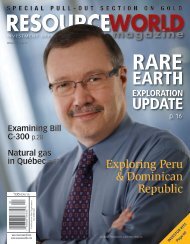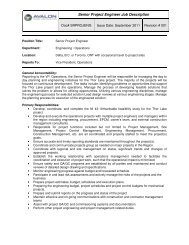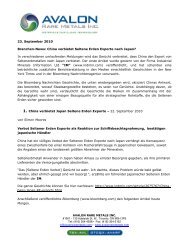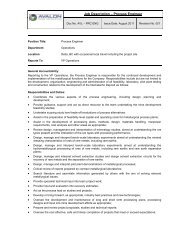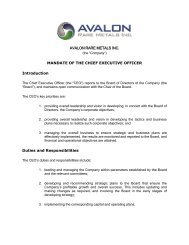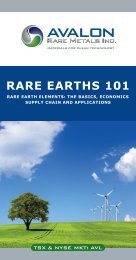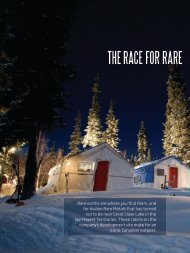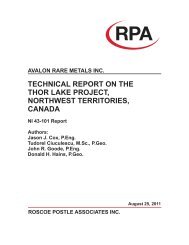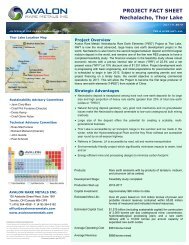technical report on the nechalacho deposit, thor lake project ...
technical report on the nechalacho deposit, thor lake project ...
technical report on the nechalacho deposit, thor lake project ...
Create successful ePaper yourself
Turn your PDF publications into a flip-book with our unique Google optimized e-Paper software.
The Nechalacho <strong>deposit</strong> alterati<strong>on</strong> system varies between 80 m (L08-65) and 190 m (L08-127)<br />
in vertical thickness, with <strong>the</strong> alterati<strong>on</strong> typically starting at <strong>the</strong> surface. The complete alterati<strong>on</strong><br />
system is enriched to varying degrees in REE, Zr, Nb and Ta, relative to unaltered syenite, with<br />
average values over <strong>the</strong> whole alterati<strong>on</strong> package of approximately 0.75% to 1.0% Total Rare<br />
Earth Oxides (TREO). Within this alterati<strong>on</strong> envelope, <strong>the</strong>re are sub-horiz<strong>on</strong>tal z<strong>on</strong>es of<br />
increased alterati<strong>on</strong> accompanied by increased REE enrichment alternating with less enriched<br />
REE z<strong>on</strong>es. Within <strong>the</strong> more intensely altered z<strong>on</strong>es, <strong>the</strong> original textures and mineralogy of <strong>the</strong><br />
host rock are no l<strong>on</strong>ger apparent.<br />
These z<strong>on</strong>es of increased alterati<strong>on</strong>, which can vary in thickness from a few metres to tens of<br />
metres, can frequently c<strong>on</strong>tain TREO grades in <strong>the</strong> range of 2% and higher. The lowermost<br />
band, referred to here as <strong>the</strong> Basal Z<strong>on</strong>e, c<strong>on</strong>tains <strong>the</strong> highest proporti<strong>on</strong> of HREO. Overall, <strong>the</strong><br />
HREO proporti<strong>on</strong> of <strong>the</strong> TREO within <strong>the</strong> 80 m to 190 m thick alterati<strong>on</strong> system is typically<br />
between 7% and 15%. However within <strong>the</strong> Basal Z<strong>on</strong>e this proporti<strong>on</strong> can exceed 30%.<br />
In general, <strong>the</strong> HREE relative to <strong>the</strong> LREE show a distinct vertical z<strong>on</strong>ati<strong>on</strong> with increasing<br />
HREE to depth. This is not always c<strong>on</strong>sistent in individual drill holes, but when averaged over a<br />
number of holes, <strong>the</strong> pattern becomes clear as illustrated in Figure 9-1.<br />
Figure 9-1<br />
TREO, HREO, HREO/TREO Against Elevati<strong>on</strong> (z1)<br />
This pattern of increasing HREE to depth is clearly important to <strong>the</strong> ec<strong>on</strong>omics of any potential<br />
mine, as <strong>the</strong> HREE have higher average prices than <strong>the</strong> LREE.<br />
Although gallium is anomalous in <strong>the</strong> intrusive relative to typical granites, it is not c<strong>on</strong>tained in<br />
<strong>the</strong> same minerals as <strong>the</strong> REE, and is in fact mainly in silicates such as chlorite, biotite and<br />
feldspar. As a result, <strong>the</strong> gallium actually varies inversely to <strong>the</strong> REE and is lower in REE and Zr<br />
enriched rocks than in <strong>the</strong> less mineralized rocks.<br />
Technical Report 43-101 – March 13, 2011 Page 9-4<br />
Prepared by Aval<strong>on</strong> Rare Metals Inc.





